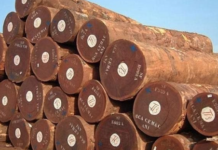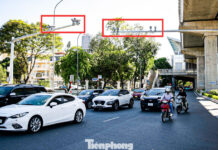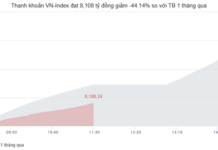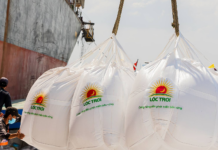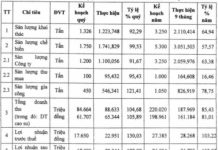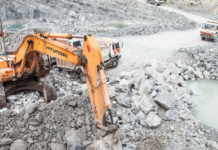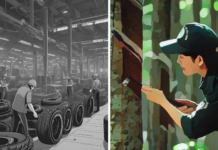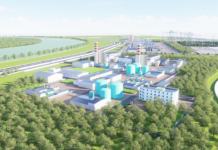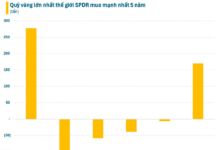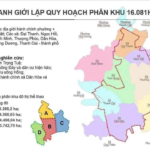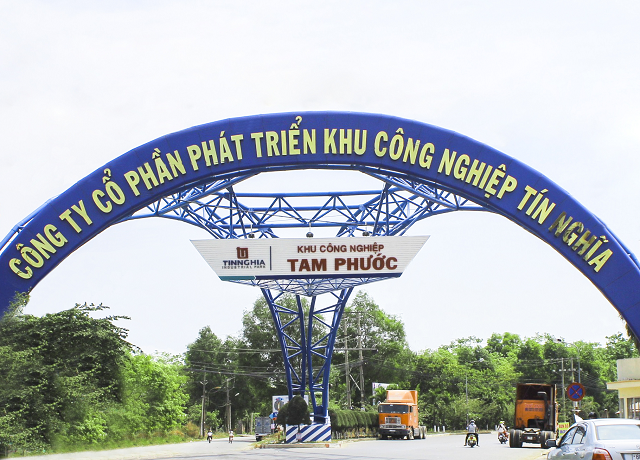A 30km Golden Monorail: Connecting Da Nang Airport to Hoi An City
The Hoa Binh Group has recently proposed an urban rail project, a 30km-long golden monorail, connecting Da Nang Airport to the ancient town of Hoi An. The project is suggested to be constructed under a Build-Operate-Transfer (BOT) format, with a proposed construction period of 6 to 9 months upon receiving the land clearance. The toll collection period is expected to last for 30 years, with ticket prices ranging from VND 150,000 to 200,000 per person per trip.
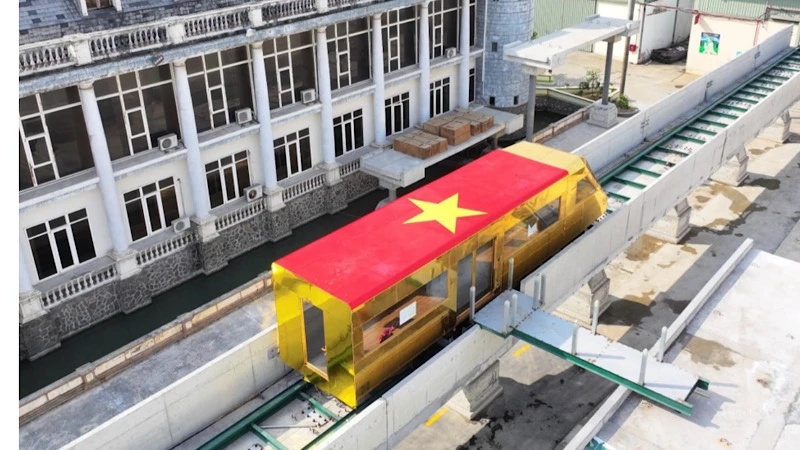
Sample elevated railway designed and copyrighted by Hoa Binh Group. Source: Nhip Song Doanh Nghiep
Mr. Nguyen Huu Duong, also known as “Duong Bia”, Chairman of Hoa Binh Group, shared that the golden monorail is a proposed urban elevated railway supported by V+ prestressed concrete piles. However, the technology and machinery to be utilized for this Danang-Hoi An line have not been disclosed by the conglomerate.
The group anticipates that this project will revolutionize urban railway technology in Vietnam and across the globe. Notably, this solution is designed and constructed by Vietnamese engineers and workers.
Danang and Hoi An are two of Vietnam’s most renowned tourist destinations, located just 30km apart. While there are existing transportation options between the two cities, including motorcycles, buses, and taxis, the golden monorail project aims to provide a new, efficient, and reliable mode of transportation for locals and tourists alike.
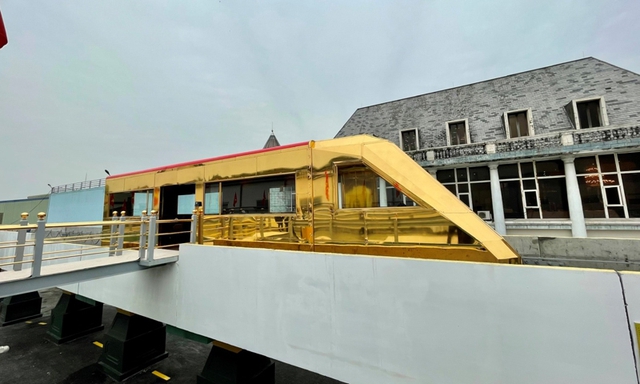
Elevated railway supported by V+ prestressed concrete piles. Source: Bao Xay Dung
The current transportation options between Danang Airport and Hoi An have their limitations. For example, traveling by motorcycle is economical and provides flexibility in timing, but it is susceptible to weather conditions and traffic congestion. On the other hand, traveling by taxi is convenient, quick, and safe, but it can be expensive.
Hence, the proposed golden monorail system by the Hoa Binh Group offers a promising alternative, providing travelers with a choice that suits their needs and schedules.
Golden Monorail Technology: Unveiling its Uniqueness
Prior to proposing the Danang-Hoi An connection, Hoa Binh Group, led by Mr. Duong “Bia”, designed and constructed a 100-meter-long golden monorail with a speed of 100 km/h in the Man Sugar Factory, Tien Son Industrial Park, Bac Ninh.
This project showcases the company’s expertise in applying prestressed concrete pile technology to build elevated railways. Instead of using an earthen embankment as the foundation, the railway utilizes concrete piles, making it suitable for hilly or mountainous terrain and even soft soil conditions in the Mekong Delta region.
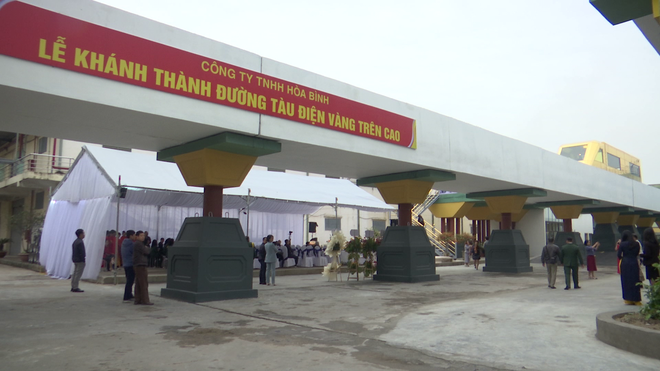
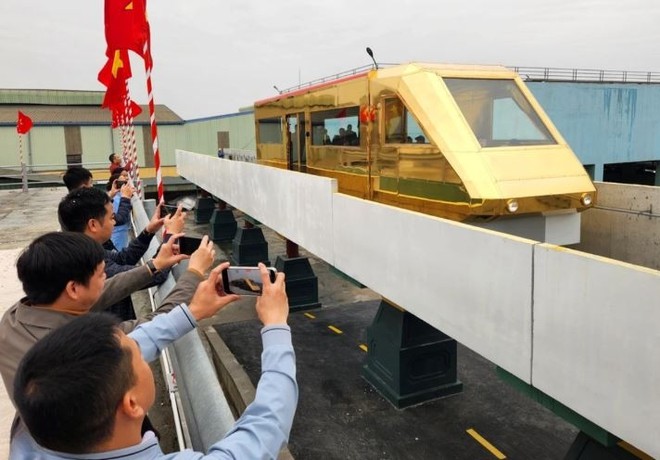
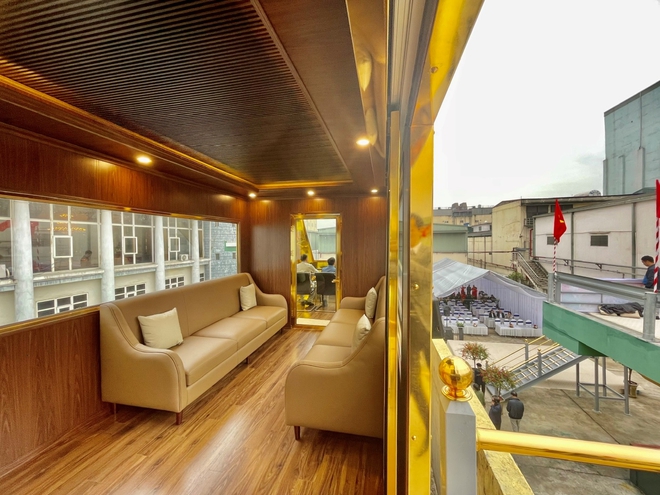
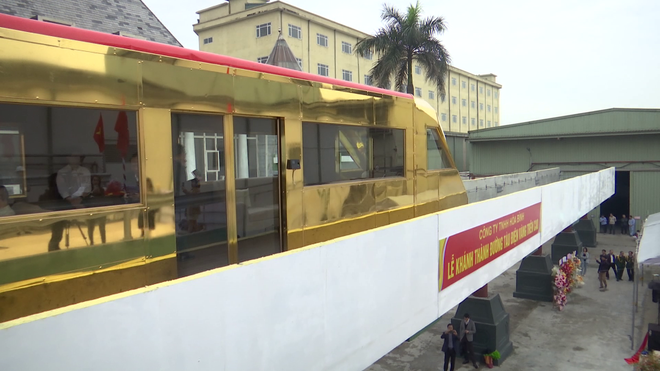
Inauguration of the Golden Monorail in Bac Ninh. Source: Bac Ninh TV
The golden monorail in Bac Ninh has undergone testing and evaluation, with the results reported to the Ministry of Transport. According to Vietnamese standards, the allowable settlement is 10 mm. Notably, the golden monorail’s test load was 700% higher than the standard, and the measured settlement was only 4.3 mm.
This monorail prototype utilizes the median strip of the road to install prestressed concrete piles with diameters ranging from 400 to 500 mm. The track, measuring 100 meters in length and 4.1 meters in width, is installed on this prototype section. The golden monorail is designed to carry 100 passengers, with a speed of 100 km/h. The locomotive is 3.8 meters long, while each carriage is 11.5 meters long and 2.8 meters wide, all adorned with gold plating.
Mr. Duong shared with the media that this urban railway technology is a groundbreaking innovation, potentially transforming the way urban railways are designed in Hanoi and Ho Chi Minh City. Unlike conventional bus rapid transit (BRT) systems, this monorail does not require additional land or complicated land clearance processes.
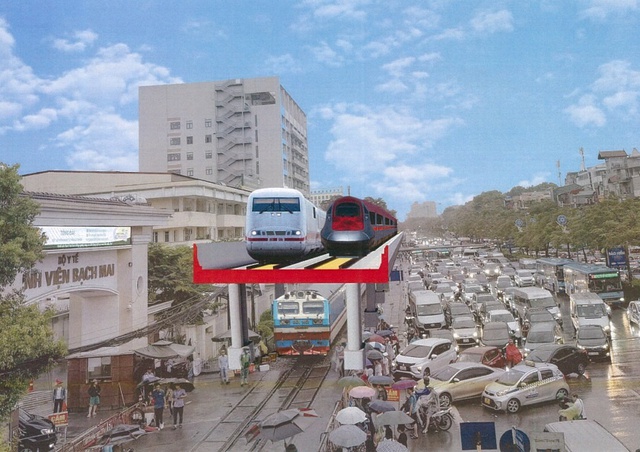
North-South high-speed railway construction simulated by Hoa Binh Group using prestressed concrete piles. Source: Nhip Song DN
The investment cost for constructing an elevated railway supported by prestressed concrete piles is estimated to be only 50-70% of the cost of building underground or conventional elevated railways.
Mr. Duong provided an example of the potential time savings using this technology. A conventional elevated railway project from the center of Hanoi to Noi Bai Airport would typically take 10 years to complete, but with this innovative approach, the construction time could be reduced to just 12 months.
By reducing the construction time, this technology also contributes to environmental protection, lowers investment and borrowing costs, and ultimately results in more affordable ticket prices for passengers.
A 200-year-old ancient house in Da Nang
Despite years of brutal war, Tich Thien Duong Ancient House (located in Thai Lai village, Hoa Nhon commune, Hoa Vang district, Da Nang city) has managed to remain intact until today, becoming a peaceful destination that carries the essence of the past through its unique and distinctive architecture.



